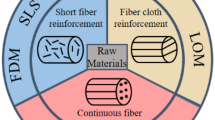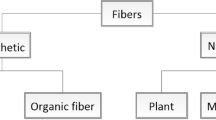Abstract
With the widespread application of lightweight materials in aerospace and automotive industries, higher demands are placed on the joining technology of lightweight materials, and the flat bottom riveting process is proposed as new technology. In this study, the material flow of three-layer sheets during the flat bottom riveting process was investigated using experimental methods. The failure modes of the sheets under different loading methods were discussed in tensile and shear tests. The results showed that a double mechanical interlock structure was created among the three-layer sheets. The first mechanical interlock between the upper and middle sheets has higher tensile and shear loads than the second mechanical interlock between the middle and lower sheets. The double mechanical interlock structure has higher joint strength compared to the single mechanical interlock structure formed by two-layer sheets of flat bottom riveting process. In addition, the tensile and shear load application methods can cause different modes of failure of the sheet. Tensile failures and pull-off failures occur with higher tensile loads and shear failures and mixed failures occur with higher shear loads. The first mechanical interlock has a stronger failure energy absorption capacity.














Similar content being viewed by others
Data availability
The raw/processed data required to reproduce these findings cannot be shared at this time due to technical or time limitations.
Code availability
Not applicable.
References
Borsellino C, Di Bella G, Ruisi VF (2007) Study of new joining technique: flat clinching. Key Eng Mater 344:685–692. https://doi.org/10.4028/www.scientific.net/KEM.344.685
Chen C, Zhao S, Han X et al (2017) Investigation of flat clinching process combined with material forming technology for aluminum alloy. Materials 10(12):1433. https://doi.org/10.3390/ma10121433
Chen C, Zhao S, Han X et al (2017) Experimental investigation on the joining of aluminum alloy sheets using improved clinching process. Materials 10(8):887. https://doi.org/10.3390/ma10080887
Qin D, Chen C (2022) Failure behavior and mechanical properties of novel dieless clinched joints with different sheet thickness ratios. J Cent South Univ 29:3077–3087. https://doi.org/10.1007/s11771-022-5120-8
Abe Y, Kishimoto M, Kato T et al (2009) Joining of hot-dip coated steel sheets by mechanical clinching. Int J Mater Form 2(1):291–294. https://doi.org/10.1007/s12289-009-0446-4
Lin P-C, Fang J-C, Lin J-W et al (2020) Preheated (heat-assisted) clinching process for Al/CFRP cross-tension specimens. Materials 13(18):4170. https://doi.org/10.3390/ma13184170
Ma Y, Yang B, Lou M et al (2020) Effect of mechanical and solid-state joining characteristics on tensile-shear performance of friction self-piercing riveted aluminum alloy AA7075-T6 joints. J Mater Process Technol 278:116543. https://doi.org/10.1016/j.jmatprotec.2019.116543
Mori K, Abe Y, Kato T (2012) Mechanism of superiority of fatigue strength for aluminium alloy sheets joined by mechanical clinching and self-pierce riveting. J Mater Process Technol 212(9):1900–1905. https://doi.org/10.1016/j.jmatprotec.2012.04.017
Ren X-q, Chen C, Ran X-k et al (2021) Microstructure evolution of AA5052 joint failure process and mechanical performance after reconditioning with tubular rivet. Trans Nonferr Metal Soc China 31:3380–3393. https://doi.org/10.1016/S1003-6326(21)65736-9
Lin J, Guo T, Su A, et al (2015) Effects of process parameters on sheets warp of clinching based on abaqus. In: 2015 International Conference on Computer Science and Mechanical Automation (CSMA) pp.308–312. IEEE. https://ieeexplore.ieee.org/abstract/document/7371672/
Kaščák L, Mucha J, Spišák E et al (2017) Wear study of mechanical clinching dies during joining of advanced high-strength steel sheets. Strength Mater 49(5):726–737. https://doi.org/10.1007/s11223-017-9918-9
Lee C-J, Kim J-Y, Lee S-K et al (2010) Parametric study on mechanical clinching process for joining aluminum alloy and high-strength steel sheets. J Mech Sci Technol 24(1):123–126. https://doi.org/10.1007/s12206-009-1118-5
Chen C, Zhang H, Peng H et al (2020) Investigation of the restored joint for aluminum alloy. Metals 10(1):97. https://doi.org/10.3390/met10010097
Neugebauer R, Kraus C, Dietrich S (2008) Advances in mechanical joining of magnesium. CIRP Ann 57(1):283–286. https://doi.org/10.1016/j.cirp.2008.03.025
Neugebauer R, Mauermann R, Dietrich S et al (2007) A new technology for the joining by forming of magnesium alloys. Pro Eng 1(1):65–70. https://doi.org/10.1007/s11740-007-0045-5
Mucha J, Kaščák L, Spišák E et al (2011) Joining the car-body sheets using clinching process with various thickness and mechanical property arrangements. Arch Civil Mech Eng 11(1):135–148. https://doi.org/10.1016/S1644-9665(12)60179-4
Lambiase FJM and Design (2015) Mechanical behaviour of polymer–metal hybrid joints produced by clinching using different tools. Mater Des 87:606–618. https://doi.org/10.1016/j.matdes.2015.08.037
Chen C, Wu J, Li H (2021) Optimization design of cylindrical rivet in flat bottom riveting. Thin Wall Struct 168:108292. https://doi.org/10.1016/j.tws.2021.108292
Ang HQ (2021) An overview of self-piercing riveting process with focus on joint failures, corrosion issues and optimisation techniques. Chin J Mech Eng 34(1):1–25. https://doi.org/10.1186/s10033-020-00526-3
Peng H, Chen C, Zhang H et al (2020) Recent development of improved clinching process. Int J Adv Manuf Technol 110(11):3169–3199. https://doi.org/10.1007/s00170-020-05978-4
Chen C, Zhao S, Han X et al (2016) Optimization of a reshaping rivet to reduce the protrusion height and increase the strength of clinched joints. J Mater Process Technol 234:1–9. https://doi.org/10.1016/j.jmatprotec.2016.03.006
Chen C, Li Y, Zhang H et al (2020) Investigation of a renovating process for failure clinched joint to join thin-walled structures. Thin Wall Struct 151:106686. https://doi.org/10.1016/j.tws.2020.106686
Lambiase F, Ko D-CJCS (2017) Two-steps clinching of aluminum and carbon fiber reinforced polymer sheets. Compos Struct 164:180–188. https://doi.org/10.1016/j.compstruct.2016.12.072
Varis J (2006) Economics of clinched joint compared to riveted joint and example of applying calculations to a volume product. J Mater Process Technol 172(1):130–138. https://doi.org/10.1016/j.jmatprotec.2005.09.009
Chen C, Qin D, Ren X et al (2021) Finite element analysis of the cylindrical rivet used in flat clinch-rivet process. J Brazilian Soc Mech Sci Eng 43(12):1–15. https://doi.org/10.1007/s40430-021-03278-w
Lei L, He X, Yu T et al (2019) Failure modes of mechanical clinching in metal sheet materials. Thin Wall Struct 144:106281. https://doi.org/10.1016/j.tws.2019.106281
Chen C, Zhang H, Zhao S et al (2021) Effects of sheet thickness and material on the mechanical properties of flat clinched joint. Front Mech Eng 16(2):410–419. https://doi.org/10.1007/s11465-020-0618-y
Chen C, Ouyang Y, Qin D (2021) Finite element analysis of material flow in flat-rivet clinching process. Int J Adv Manuf Technol 116:1961–1974. https://doi.org/10.1007/s00170-021-07532-2
He X (2017) Clinching for sheet materials. Sci Technol Adv Mater 18:381–405. https://doi.org/10.1080/14686996.2017.1320930
Gerstmann T (2016) Erweiterung der Verfahrensgrenzen des Flach-Clinchens. https://nbn-resolving.org/urn:nbn:de:bsz:ch1-qucosa-208840
Gerstmann T, Awiszus B (2014) Recent developments in flat-clinching. Comput Mater Sci 81:39–44. https://doi.org/10.1016/j.commatsci.2013.07.013
Han X, Zhao S, Liu C et al (2016) Optimization of geometrical design of clinching tools in clinching process with extensible dies. Proc Inst Mech Eng Part C: J Mech Eng Sci 231:3889–3897. https://doi.org/10.1177/0954406216660336
Chen C, Zhang H, Xu Y et al (2020) Investigation of the flat-clinching process for joining three-layer sheets on thin-walled structures. Thin Wall Struct 157:107034. https://doi.org/10.1016/j.tws.2020.107034
Chen C, Li Y, Zhai Z et al (2019) Comparative investigation of three different reforming processes for clinched joint to increase joining strength. J Manuf Process 45:83–91. https://doi.org/10.1016/j.jmapro.2019.06.009
Chen C, Zhao S, Cui M et al (2017) Numerical and experimental investigations of the reshaped joints with and without a rivet. Int J Adv Manuf Technol 88(5):2039–2051. https://doi.org/10.1007/s00170-016-8889-5
He X, Zhao L, Yang H et al (2014) Investigations of strength and energy absorption of clinched joints. Comput Mater Sci 94:58–65. https://doi.org/10.1016/j.commatsci.2014.01.056
Shi C, Li H, Chen C et al (2022) Experimental investigation of the flat clinch–rivet process. Thin Wall Struct 171:108612. https://doi.org/10.1016/j.tws.2021.108612
Funding
This research work is supported by the National Natural Science Foundation of China (Grant No. 52275398), Central South University Innovation-Driven Research Programme (2023CXQD069), Hunan Provincial Natural Science Foundation for Excellent Young Scholars (Grant No. 2021JJ20059), the Project of State Key Laboratory of High Performance Complex Manufacturing, Central South University (Grant No. ZZYJKT2022-01), Huxiang Young Talents Program of Hunan Province (No.2021RC3024) and Huxiang High-Level Talent Gathering Project of Hunan Province (Grant No. 2021RC5001).
Author information
Authors and Affiliations
Contributions
Chao Chen and Xiao Ouyang analyzed the data; Chao Chen contributed reagents/materials/analysis tools; Xiao Ouyang and Chao Chen wrote the paper.
Corresponding author
Ethics declarations
Ethical approval
Not applicable.
Consent to participate
Not applicable.
Consent to publish
Not applicable.
Competing interests
The authors declare no competing interests.
Additional information
Publisher's note
Springer Nature remains neutral with regard to jurisdictional claims in published maps and institutional affiliations.
Rights and permissions
Springer Nature or its licensor (e.g. a society or other partner) holds exclusive rights to this article under a publishing agreement with the author(s) or other rightsholder(s); author self-archiving of the accepted manuscript version of this article is solely governed by the terms of such publishing agreement and applicable law.
About this article
Cite this article
Chen, C., Ouyang, X. Research on the joining of three-layer sheets by flat bottom riveting process. Int J Adv Manuf Technol 127, 459–469 (2023). https://doi.org/10.1007/s00170-023-11410-4
Received:
Accepted:
Published:
Issue Date:
DOI: https://doi.org/10.1007/s00170-023-11410-4




